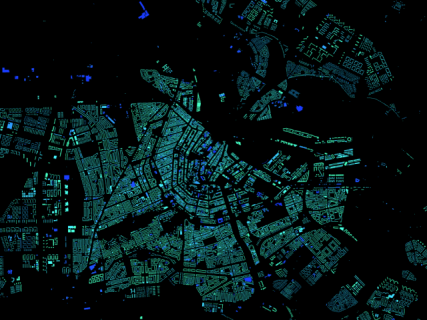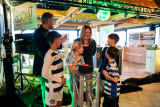exploring Amsterdam's 'urban mine'
Conclusion & results
Overall, most assumption were found to remain valid, although the validity of some assumptions could not be indicated, specifically due to the lack of access to roof spaces. However, five assumptions were found to be in need of revision, these are briefly listed in this chapter together with associated revision recommendations.
1. Buildings before 1900 were found to not include steel in the load-bearing
structure
Construction year data from the BAG register is available, which could provide
an indication of the metal content of the load bearing structure. Inclusion of the
construction year in the dataset, combined with a with a lower steel score for
buildings built before 1900, should be considered.
2. Apartments smaller than 75m2 were found not to have a separate toilet and
bathroom, instead the toilet was present in the bathroom
The assumed amenities of the 55 - 75m2 standard apartment could be changed to
one kitchen and a bathroom with toilet. The impact on the metal content should
be researched and adapted when change is found to be significant.
3. Recently completed buildings were found not to be included in the database
It should be ensured that the database is kept up to date in order to account for
these recently completed building.
4. Some buildings with a non-residential function were found to (temporarily)
accommodate a residential function
To account for all residential buildings, a clear distinction needs to be made
between the residential function and use of the building. Although the currently
used BAG function distinction might very well be adequate, research on the
relevance of including buildings used for residential purposes, but with other
functions according to the BAG register is recommended. This research should
account for the metal concentration in these buildings versus the amount of
these buildings in Amsterdam.
5. Some buildings were found to use electric cooking appliances rather than gas
The absence of gas connections in the kitchen is likely to lower the copper content
of the building. Because policy objectives increasingly aim to disconnect from
the gas infrastructure (ECN, 2016), it is recommended to research its impact on
the amount of copper in buildings to be able to accurately estimate the copper
content in the future.
Download the publication.
Go to the projectsite.
Partners:
Leiden University, Institute of Environmental Sciences: Ester van der Voet, Ruben Huele
Waag Society: Job Spierings, Ruben Huele
AMS Institute / Delft University of Technology, Faculty of Architecture and the Built Environment: Ellen van Bueren, Alexander Koutamanis, Boukje van Reijn
Metabolic: Anna Krotova
Industrial Ecology students: Luuk Gremmen, Sho Lin
Project leader / contact:
Ruben Huele, <a>urbmines@xs4all.nl</a>





